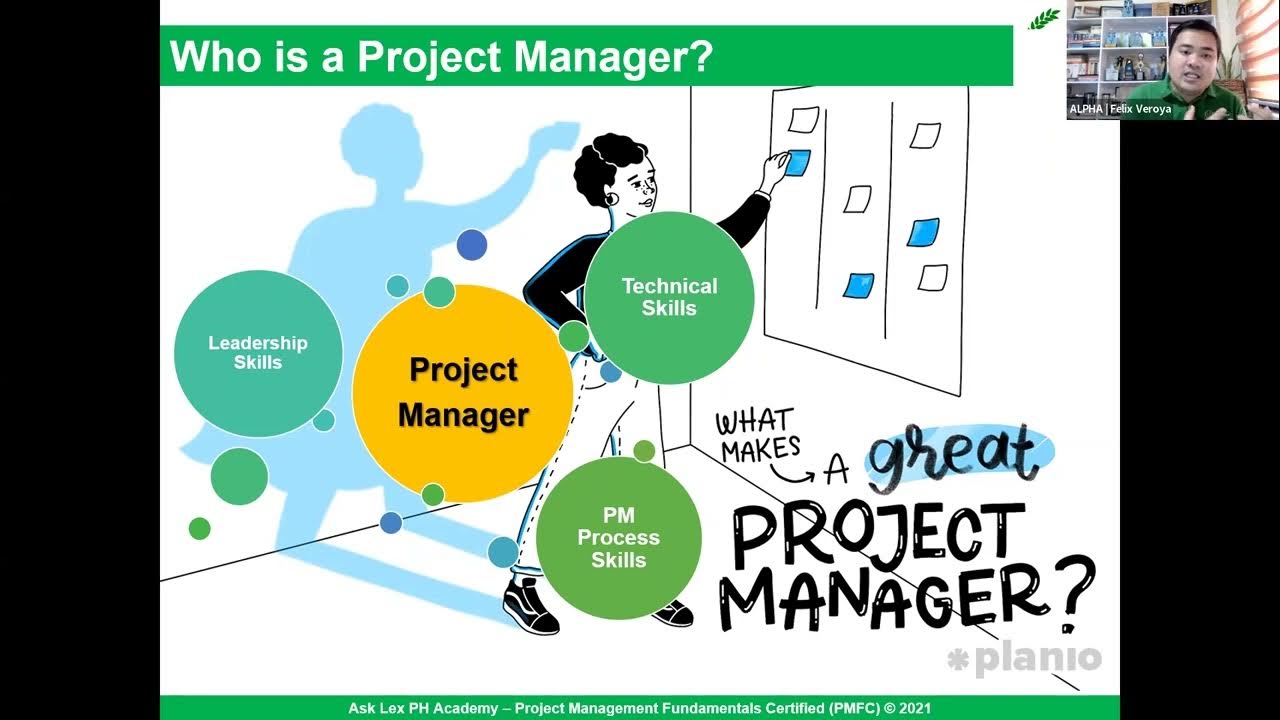What are Project Constraints?
Summary
TLDRThis video explores the concept of project constraints, which are limitations that affect a project manager's decisions. The speaker discusses various types of constraints, including time, resources, budget, regulatory and legislative factors, technology, internal policies, and stakeholder requirements. These constraints shape how projects are planned and executed. The video emphasizes the importance of identifying and understanding these constraints early in the project definition stage to avoid costly mistakes. By considering all these factors, project managers can make informed decisions to successfully navigate their project’s challenges.
Takeaways
- 😀 Project constraints are limitations that restrict the choices available to a project manager in designing and executing a project.
- 😀 Time constraints are a common project limitation, affecting scheduling and project timeline.
- 😀 Resource constraints include availability of people, materials, and equipment, which can impact project progress.
- 😀 Budgetary constraints limit the financial resources available to complete a project, often constraining project scope or features.
- 😀 Regulatory and legislative constraints ensure the project complies with applicable laws and regulations, including data usage, health, and safety standards.
- 😀 Policy or governance constraints require adherence to the internal policies, procedures, and requirements of the organization executing the project.
- 😀 Technology constraints refer to limitations in the available technology and tools that can impact project execution within budget.
- 😀 Stakeholder preferences, requirements, and perceptions can constrain project decisions, ensuring the project aligns with their expectations.
- 😀 Being unaware of project constraints can lead to mistakes that require corrections, underscoring the importance of identifying them early.
- 😀 Identifying constraints early in the project definition stage allows for better planning and execution, ensuring smoother project management.
- 😀 The project manager must always consider these constraints when making decisions to avoid issues and optimize project success.
Q & A
What are project constraints?
-Project constraints are limitations that affect the choices and decisions a project manager can make when designing and executing a project. These constraints may influence the scope, schedule, resources, and other aspects of a project.
How does the Project Management Institute define project constraints?
-The Project Management Institute defines project constraints as limiting factors that affect the execution of a project, program, portfolio, or process.
What is an example of a common project constraint?
-A common example of a project constraint is time. Time constraints can limit the scheduling of a project, affecting when tasks need to be completed and how the project progresses.
What types of resource constraints might a project manager encounter?
-Project managers may encounter resource constraints such as unavailability of people, materials, or equipment. For instance, key personnel might not be available at the required times, or essential materials or equipment might be unavailable or booked by others.
How do budgetary constraints impact a project?
-Budgetary constraints limit the financial resources available to complete a project. A project manager must ensure that all project activities are completed within the approved budget, which often involves making tough decisions regarding resource allocation and priorities.
What are regulatory or legislative constraints?
-Regulatory or legislative constraints refer to legal requirements that a project must adhere to. These may involve compliance with laws, regulations, industry standards, and safety guidelines that govern how the project is executed.
How do internal policies and governance act as constraints?
-Internal policies and governance constraints are limitations imposed by an organization’s own procedures, policies, and requirements. A project manager must ensure that the project complies with these internal rules and guidelines, which could include specific reporting structures or operational procedures.
In what way does technology serve as both a constraint and an enabler?
-Technology can serve as both a constraint and an enabler in a project. While technology can facilitate the completion of tasks, budgetary and resource constraints might limit access to advanced technology or tools, restricting the options available to the project team.
How do stakeholder preferences impact project decisions?
-Stakeholder preferences, requirements, needs, and perceptions can constrain a project manager’s decisions. These factors are essential to consider when making choices in the project to ensure that stakeholder expectations are met.
Why is it important to identify constraints early in a project?
-Identifying constraints early during the project definition stage is crucial for successful project planning. It helps ensure that the project is designed and executed within the limitations of time, resources, budget, and other constraints, reducing the risk of mistakes and unexpected challenges later on.
Outlines

This section is available to paid users only. Please upgrade to access this part.
Upgrade NowMindmap

This section is available to paid users only. Please upgrade to access this part.
Upgrade NowKeywords

This section is available to paid users only. Please upgrade to access this part.
Upgrade NowHighlights

This section is available to paid users only. Please upgrade to access this part.
Upgrade NowTranscripts

This section is available to paid users only. Please upgrade to access this part.
Upgrade NowBrowse More Related Video

Who is a project manager_rev1

030 Using the Gantt chart to plan the project work streams

What is Project Management? | Explained in 10 Minutes

Linear Programming - Introduction | Don't Memorise

Project Integration Management Overview

What is Project Management? Definition, Fundamentals, Objectives & Examples - AIMS Education
5.0 / 5 (0 votes)